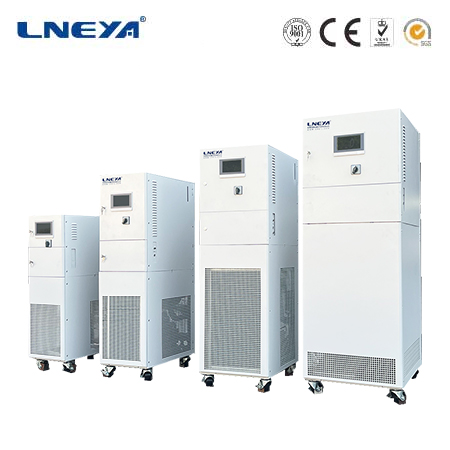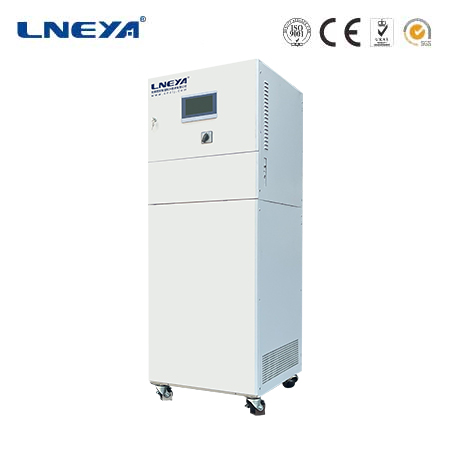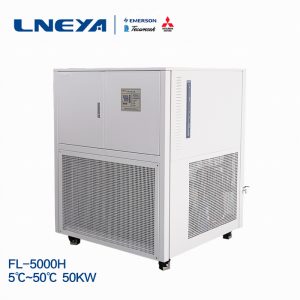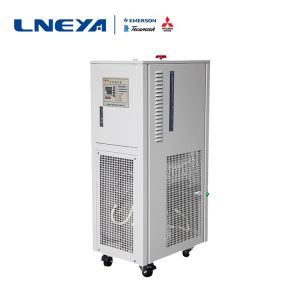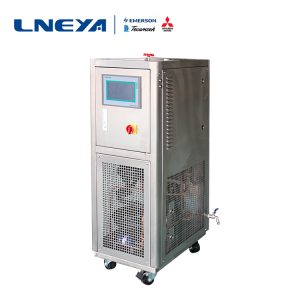Dual-channel chillers for semiconductor manufacturing industry
Dual-channel chillers are used in a variety of processes in the semiconductor manufacturing industry. The main purpose is to provide precise temperature control to ensure that the equipment in the semiconductor manufacturing process operates within the optimal temperature range and improve production efficiency and product quality.
The following are some key processes where dual-channel chillers may be used in the semiconductor manufacturing industry:
- Wafer cleaning:
- During the wafer cleaning process, the temperature of the cleaning tank needs to be controlled to ensure the effectiveness of the cleaning solution and the cleanliness of the wafer surface.
- Dual-channel chillers can control the temperature of different cleaning tanks separately to ensure temperature consistency during the cleaning process.
- Etching process:
- During the etching process, the temperature of the etching chamber needs to be precisely controlled to ensure the etching rate and selectivity.
- Dual-channel chillers can provide cooling for different parts of the etcher at the same time, such as the etching chamber and the cooling system, to keep the equipment at the optimal operating temperature.
- Deposition process:
- In deposition processes such as chemical vapor deposition (CVD) or physical vapor deposition (PVD), the temperature of the reaction chamber needs to be precisely controlled to ensure the quality and uniformity of the film.
- The dual-channel chiller can provide precise temperature control for the deposition chamber and cooling system to ensure temperature consistency during the deposition process.
- Photolithography process:
- During the photolithography process, the temperature of the exposure machine needs to be precisely controlled to ensure the exposure characteristics of the photoresist and the accuracy of the pattern.
- The dual-channel chiller can provide cooling for different parts of the exposure machine, such as the light source system and the mask stage, to keep the equipment at the optimal operating temperature.
- Annealing process:
- During the annealing process, the temperature of the annealing furnace needs to be controlled to ensure the stability of the lattice structure and improve the material properties.
- The dual-channel chiller can provide cooling for the annealing furnace to ensure the temperature control accuracy during the annealing process.
- Ion implantation:
- During the ion implantation process, the temperature of the ion implanter needs to be precisely controlled to ensure the accuracy of ion implantation and the integrity of the material.
- The dual-channel chiller can provide cooling for different parts of the ion implanter, such as the ion source and the implantation chamber, to ensure the temperature stability of the equipment.
- Packaging process:
- During the packaging process, the temperature of the packaging equipment needs to be controlled to ensure the curing characteristics of the packaging material and the packaging quality.
- Dual-channel chillers can provide cooling for different parts of packaging equipment, such as curing ovens and cooling systems, to ensure temperature control accuracy during the packaging process.
- Test process:
- During the test process, the temperature of the test equipment needs to be precisely controlled to ensure the accuracy and consistency of the test results.
- Dual-channel chillers can provide cooling for different parts of the test equipment, such as test sockets and heat sinks, to ensure temperature consistency during the test process.
- Laser cutting equipment:
- Laser: The temperature of the laser needs to be precisely controlled to ensure the stability and accuracy of the laser output.
- Cooling system: used to control the internal temperature of the laser cutting machine to ensure stable operation of the equipment.
- Chemical Mechanical Polishing (CMP) Equipment:
- Polishing pad: The temperature of the polishing pad needs to be precisely controlled to ensure temperature consistency during the polishing process.
- Cooling system: used to control the internal temperature of the CMP equipment to ensure stable operation of the equipment.
In summary, dual-channel chillers are widely used in the semiconductor manufacturing industry. By providing precise temperature control, they ensure that the equipment in the semiconductor manufacturing process operates within the optimal temperature range, thereby improving production efficiency and product quality.
- MORE
FLT-100℃~90℃
Single channel air-cooled cooler, mainly designed for etching machines. It is used to provide independent temperature control for the chamber sid…
- MORE
FLTZ -45℃~90℃
Heating method within 40 ℃ adopts a compressor hot gas heating fully enclosed design, and the machine operates continuously for 24 hours The semiconductor temperature control device Chiller is mainly used for p…
loading…
已经是到最后一篇内容了!
Related recommendations
-
Benefits Of Dual Chiller System
479Dual chillers is a dual-channel cooling devices with two independent refrigeration circuits inside. You can control the operating parameters of each channel separately on a touch screen.
View details -
How to choose low temperature and high temperature aging test equipment?
1104The refrigeration capacity and temperature range of materials in different industries are different. Generally speaking, the cooling capacity is divided into 80kw, 120kw, 180kw, 240kw, 360kw, and the cooling temperature ranges from -25°C to -5°C. ...
View details -
How important is the insulation of the chiller?
1273Answer: For the chiller, if it is operated at high temperature, a large amount of cold air in the industrial chiller may be severely lost. After the sealing effect of the use environment, through timely and effective heat preservation, the operati...
View details -
Semiconductor laser automatic temperature control equipment accessories fault solution
1129Semiconductor laser automatic temperature control compressor frosting, may be circulating water circulation or valve is not open, check the water valve, all pipelines, to ensure smooth, install short-circuit pipeline. It may be that the circulatin...
View details -
Application of laboratory temperature control unit machines in the chemical industry
995laboratory temperature control unit application
View details
 LNEYA Industrial Chillers Manufacturer Supplier
LNEYA Industrial Chillers Manufacturer Supplier









